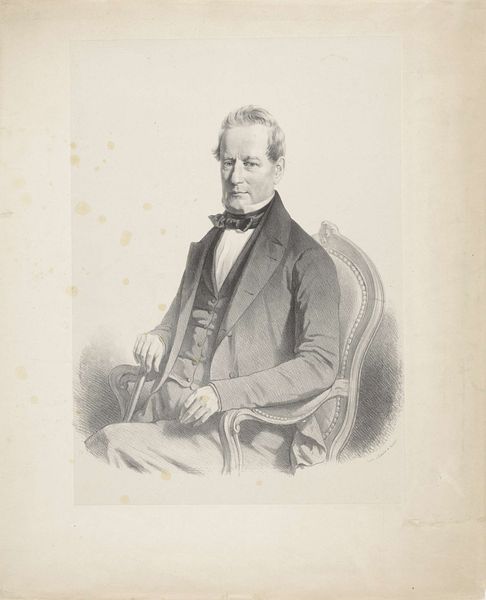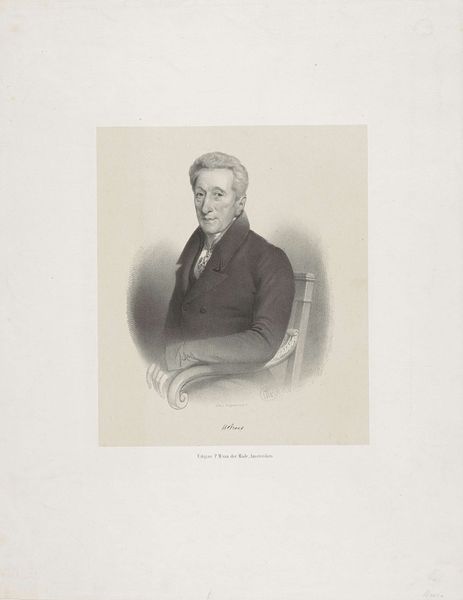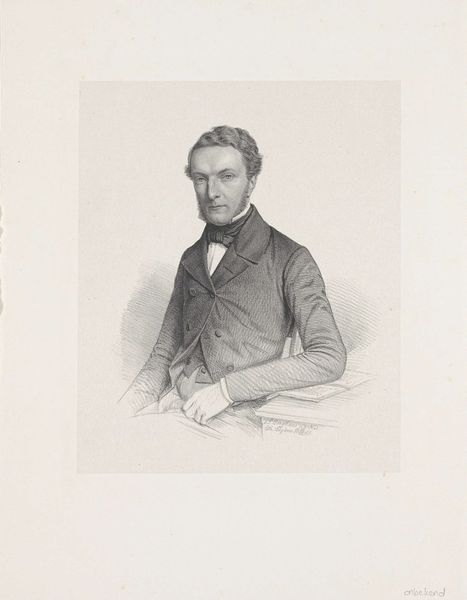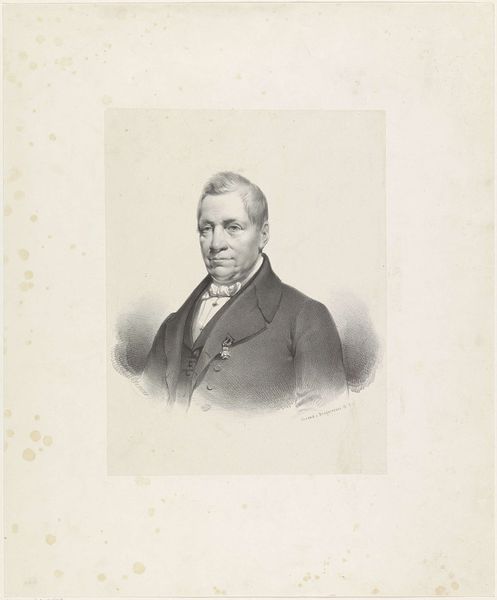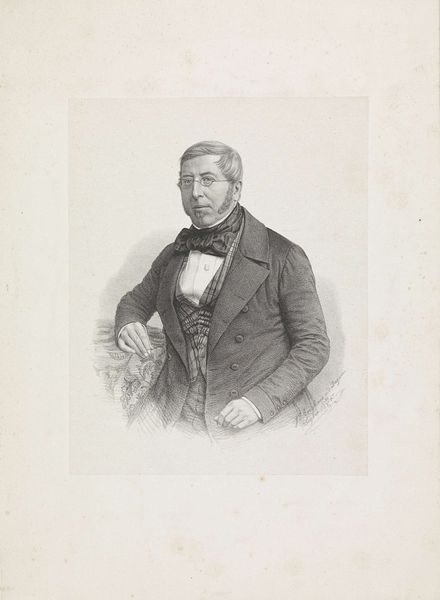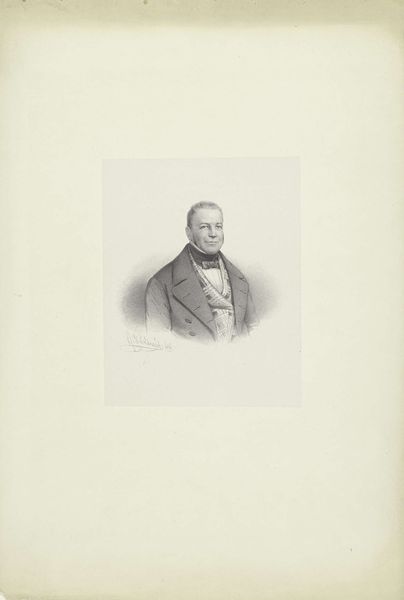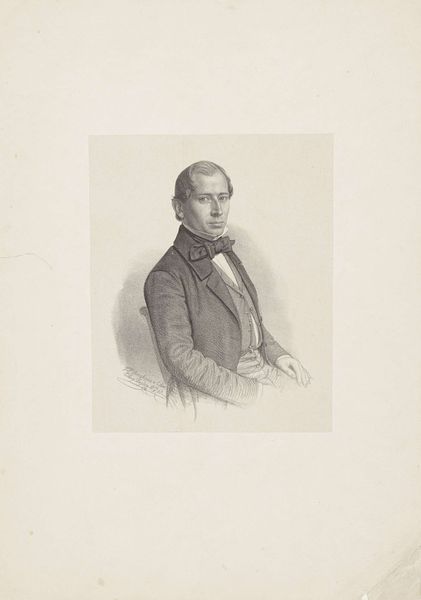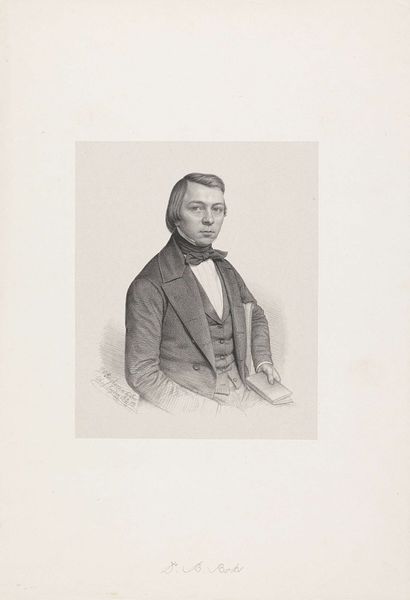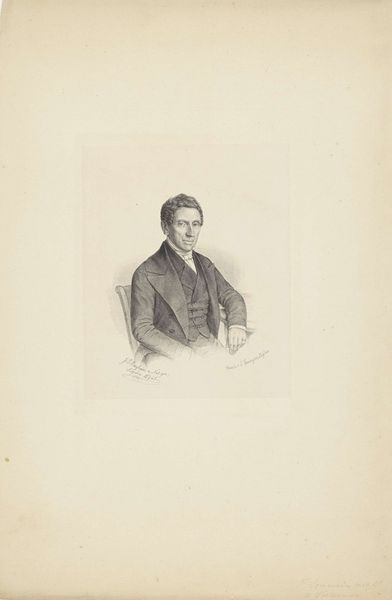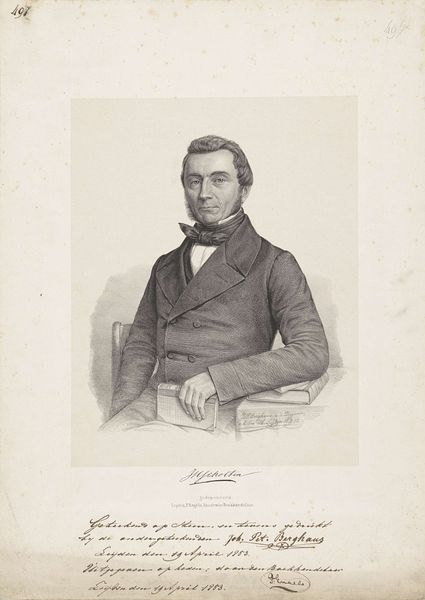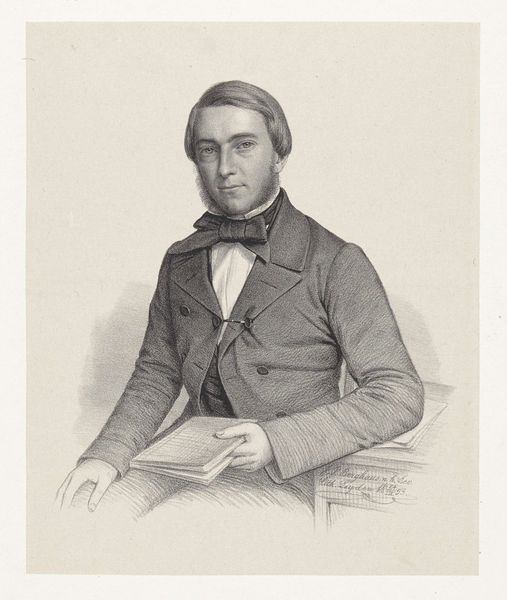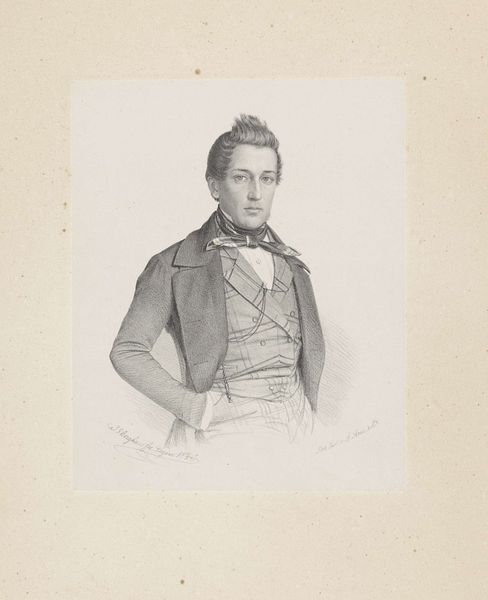
Portret van een onbekende man, mogelijk J. Stemberg Possibly 1852 - 1855
0:00
0:00
drawing, pencil
#
portrait
#
pencil drawn
#
drawing
#
light pencil work
#
pencil sketch
#
historical photography
#
pencil
#
portrait drawing
#
academic-art
#
realism
Dimensions: height 285 mm, width 233 mm
Copyright: Rijks Museum: Open Domain
This portrait of an unknown man, possibly J. Stemberg, was made by Johann Peter Berghaus using lithography, a printing technique that democratized image-making in the 19th century. Lithography involves drawing on a flat stone or metal plate with a greasy crayon, then applying ink which adheres only to the greasy areas. The printmaker then transfers the image to paper. Here, Berghaus uses this process to capture the likeness of a man in a suit, holding a book. The texture of the lithographic crayon is evident in the soft gradations of tone, giving depth to the figure's face and clothing. Compared to laborious techniques like engraving, lithography allowed for relatively quick reproduction, making images more accessible to a wider audience. This print reflects a shift in artistic production towards more industrial methods, catering to the growing middle class and their desire for affordable art. It also underlines a change in how art becomes more accessible to a wider range of social classes and their patterns of consumption.
Comments
No comments
Be the first to comment and join the conversation on the ultimate creative platform.

